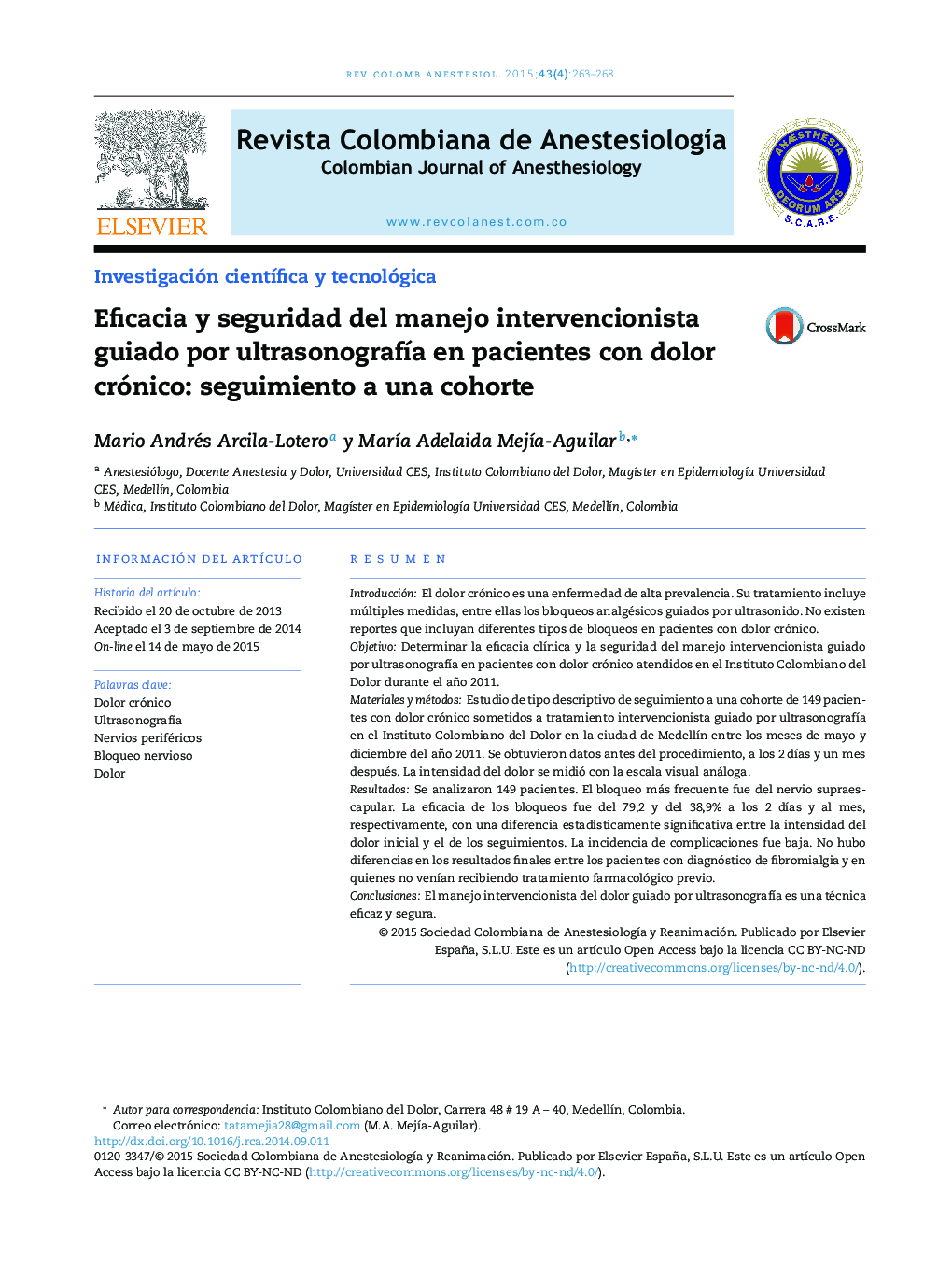| Article ID | Journal | Published Year | Pages | File Type |
|---|---|---|---|---|
| 2767740 | Revista Colombiana de Anestesiología | 2015 | 6 Pages |
ResumenIntroducciónEl dolor crónico es una enfermedad de alta prevalencia. Su tratamiento incluye múltiples medidas, entre ellas los bloqueos analgésicos guiados por ultrasonido. No existen reportes que incluyan diferentes tipos de bloqueos en pacientes con dolor crónico.ObjetivoDeterminar la eficacia clínica y la seguridad del manejo intervencionista guiado por ultrasonografía en pacientes con dolor crónico atendidos en el Instituto Colombiano del Dolor durante el año 2011.Materiales y métodosEstudio de tipo descriptivo de seguimiento a una cohorte de 149 pacientes con dolor crónico sometidos a tratamiento intervencionista guiado por ultrasonografía en el Instituto Colombiano del Dolor en la ciudad de Medellín entre los meses de mayo y diciembre del año 2011. Se obtuvieron datos antes del procedimiento, a los 2 días y un mes después. La intensidad del dolor se midió con la escala visual análoga.ResultadosSe analizaron 149 pacientes. El bloqueo más frecuente fue del nervio supraescapular. La eficacia de los bloqueos fue del 79,2 y del 38,9% a los 2 días y al mes, respectivamente, con una diferencia estadísticamente significativa entre la intensidad del dolor inicial y el de los seguimientos. La incidencia de complicaciones fue baja. No hubo diferencias en los resultados finales entre los pacientes con diagnóstico de fibromialgia y en quienes no venían recibiendo tratamiento farmacológico previo.ConclusionesEl manejo intervencionista del dolor guiado por ultrasonografía es una técnica eficaz y segura.
IntroductionChronic pain is a highly prevalent condition and its treatment includes multiple measures, including ultrasound-guided analgesic blocks. There are no reports available including different types of blocks in chronic pain patients.ObjectiveTo determine the clinical efficacy and safety of ultrasound-guided interventional management in chronic pain patients that consulted at Instituto Colombiano del Dolor in 2011.Materials and methodsDescriptive follow-up trial of a cohort of 149 chronic pain patients undergoing ultrasound-guided interventional therapy at Instituto Colombiano del Dolor in Medellín city, from May through December 2011. Data were collected prior to the procedure, at day two and then one month later. Pain intensity was measured with the visual analogue scale.Results149 patients were analyzed. The most common block was the supra-scapular nerve. The efficacy of the blocks was 79.2% and 38.9% after two days and one month, respectively, with a statistically significant difference between the intensity of the initial pain and pain at follow-up. The incidence of complications was low. There were no differences in the outcomes between the patients with a diagnosis of fibromyalgia and those who had not been receiving any prior pharmacological therapy.ConclusionsUltrasound-guided interventional pain management is an effective and safe technique.
